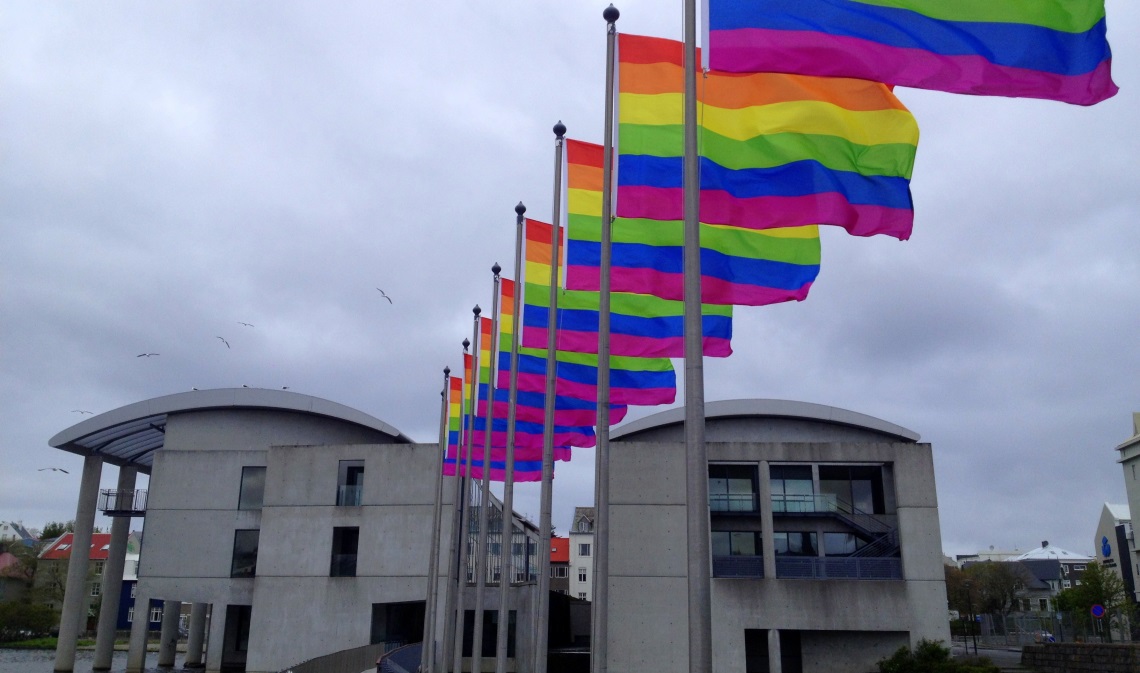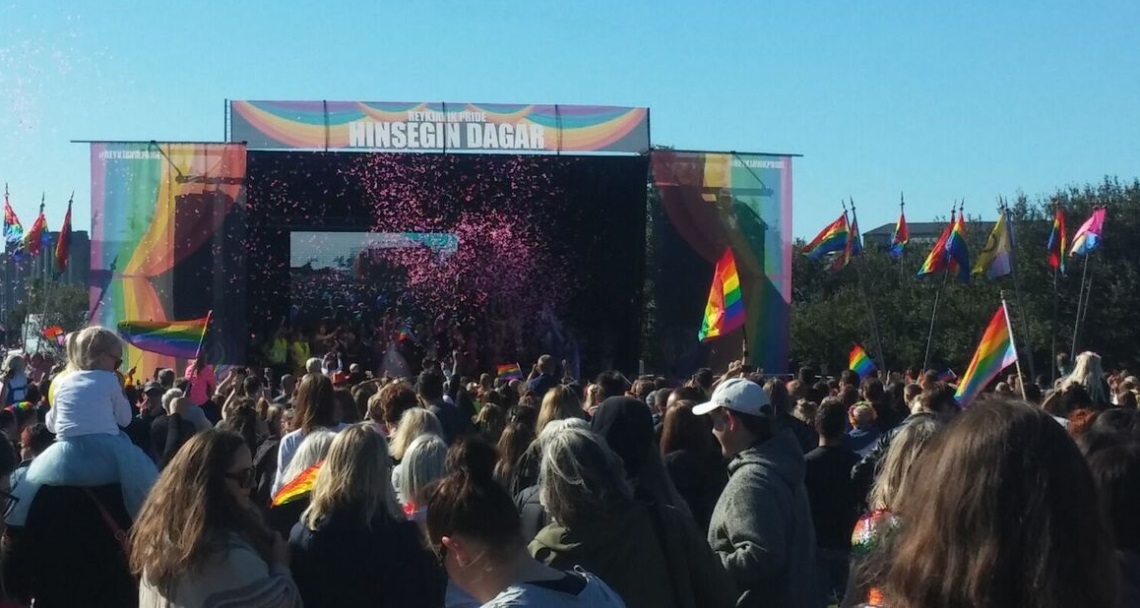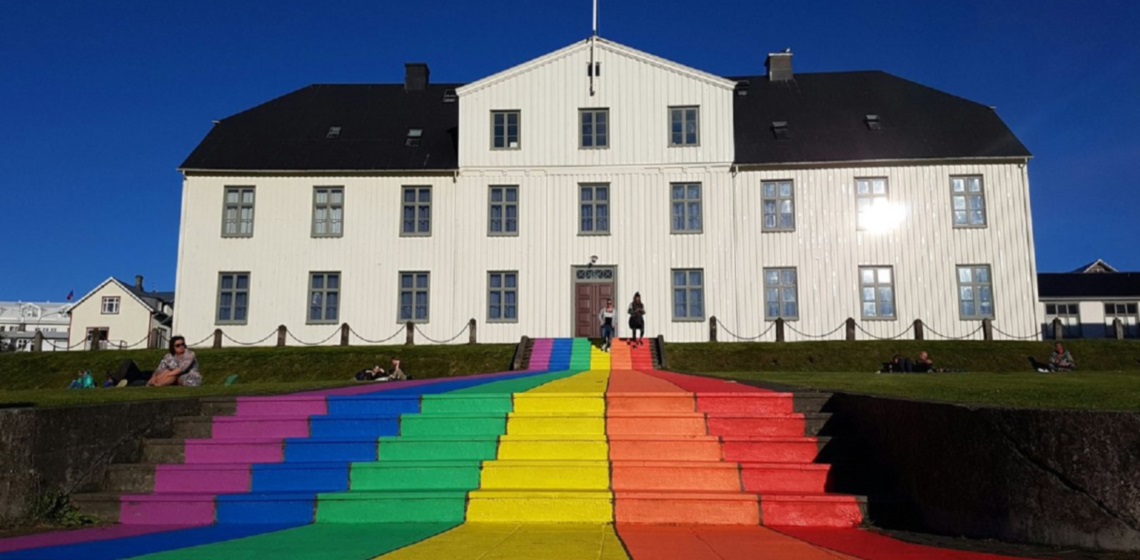As each year since 1999, Reykjavik dressed up in the colors of the rainbow to celebrate Pride. Before I moved to Iceland I’d only heard stories about how accepting the island with a population of only 320 000 is towards LGBTQ+ people is, but always assumed it was parth truth, part exaggeration. I remember during the first Pride I spent in Reykjavik, I couldn’t believe my eyes when I saw that literally everyone went on the street waving the rainbow flag. This year was the third time I took part in the festival and I’m already looking forward to the next one.
The story of Reykjavík Pride dates back to 1993, when local lesbians and gays gathered by the house of parliament to demonstrate for equal rights. They had to wait until l 2006 when it became possible for same sex couples to adopt and lesbian couples were allowed to use artificial insemination. In 2010 the Icelandic Parliament - lead by Jóhanna Sigurðardóttir, the first openly gay Prime Minister of Modern History - voted unanimously for the equality of same sex marriage. Therefore, it is no wonder that Iceland is the least homophobic country among the OECD member states. In the past I only got homophobic insults on one occasion and they came from a non-Icelander.

Prior to Reykjavík Pride rainbow flags were put up on all major buildings, offices, restaurants and cafés of the city, and some buses of the local public transport company were flourishing in the colors of the rainbow as well. The festival program was quite varied it included a drag show, queer cruise and a family picnic just to mention a few events. But it was not all about partying: interesting talks and workshops were held during the festival, and to my great happiness one of them introduced the stories of LGBTQIA+ immigrants in Iceland. The most popular event of this year was the talk about the social and legal situation of trans children and youth in Iceland, with a very wide range of participants which didn’t only involved young trans people and their friends and family but also many from local schools and hospitals came to listen stories and ask questions.
We could hardly wait for Saturday, the day of the parade to arrive. In addition to it being a political statement, it is also a challenge about who can put on the most glitter to look like a disco ball. In sparkling sunshine and 18 °C - summer heat! - we waved the rainbow flag full of emotions, laughing, hugging each other.
The name of the parade is gleðigangan in Icelandic, which means “joy walk”, and many people joke that the parade day is celebrated by more people than the National Day of Independence.
This may be true, as roughly one-third of the population of the island, so about 100,000 people came to see the parade. People of all ages from newborn babies in strollers until elderly people using walking sticks could be found both in the parade and among the audience. This was the first time asexual people took part in the parade, besides them, among others, there were also diplomats, mayor of Reykjavik, rainbow families, human rights organizations, the queer choir, and the staff of the local gay bar - because there is only one in this country.

Those who were marching in the name of the local LGBTQIA + organization, Samtökin '78, were holding flags in descending order according to how many percents countries got on the International Lesbian Gay Bisexual Transgender and Intersex Association (ILGA) rainbow map. This survey examined the rights of LGBTI people based on different aspects. 100% is obtained where LGBTI people enjoy full equality, but unfortunately no country has reached it yet. Iceland has plummeted down the list in the recent years and this year, with its 47%, it lags far behind the expectations set for the "least homophobic country". The organization wanted to call out local politicians to do something, because the current state is unacceptable. The third country in the march behind Iceland was nothing else than Hungary. A pretty shameful performance from my beloved countries, I really hope that this situation will change in both cases in the near future.
And why can a country have such high ranking among the OECD countries but be only in the middle of the ILGA liat? First, the OECD survey deals only with homophobia, so it does not represent discrimination against other LGBTQIA + people, and it only surveyed public opinion regarding homophobia. ILGA, on the other hand, has examined the legal status of LGBTI people. We can discover big holes in the Icelandic law, for example there is nothing that would prohibit discrimination in the workplace based on somebody’s sexual orientation. The reason for this might be that it doesn’t even cross the mind of Icelandic people to discriminate against anyone for this reason, but without legal background, there is nothing to do this mindset changes.

After the parade which was a lot of fun, we gathered in one of the city parks to listen to concerts and speeches and to enjoy the sunshine. Wherever I looked, I only saw smiling faces. It makes me happy to live in such a peaceful country and I'm incredibly grateful to those who fought and made sacrifices to achieve all that we have today. There is still a long way to accomplish full equality, but in such beautiful sunshine, surrounded by love, I still believe that once it will happen.

